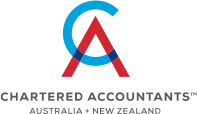When you decide to become an employer and hire employees, it is important to be aware of your payment and reporting obligations as a boss. The relevant authorities do expect each employer to understand their obligations and to adhere to them. Non-adherence may result in significant penalties being imposed upon you.
The following information is a summary only and is intended to create awareness of your obligations as an employer. Links to relevant websites have been provided to assist you in becoming familiar with your obligations.
It is vital that you understand the following components prior to becoming an employer:
-Employee Tax File Number Declaration
-PAYG Withholding (PAYGW)
-Superannuation for Employees
-Annual Employee Reporting
-WorkCover Insurance
-Payroll Tax (if applicable)
Employee Tax File Number Declaration
Upon the commencement of employment, each employee must complete and sign a Tax File Number declaration form. You will submit this form to the Australian Tax Office (ATO) and will also use this information to determine how you pay your employee. Refer to this ATO link for further information: ATO Tax File Number Declarations Information
Pay As You Go Withholding Tax (PAYGW)
As you will be paying wages to your employees, you are required to register for Pay As You Go Withholding Tax (PAYGW) with the Australian Taxation Office (ATO). If not already actioned by Nitschke Nancarrow Accountants, refer to this ATO link for guidance on how to register: ATO Registering for PAYG Withholding Information
When paying wages, you are required to withhold taxes from each wage payment made to employees. Refer to this ATO link for further information and to assist you with calculating the tax to be withheld: ATO PAYG Withholding Information
Once you have registered with the ATO as a PAYG Withholder, there will be new Pay As You Go Withholding Tax (PAYGW) fields on your Business Activity Statement (BAS). You are obligated to include both the gross wages paid and the tax withheld in these fields for each period. The taxes withheld will be included in the net amount payable/refundable on your BAS. If you’d like Nitschke Nancarrow Accountants to complete your BAS, we’ll ask you to provide us with your gross wages and tax withheld each period. The following ATO link explains this further: ATO PAYGW – BAS Reporting Requirements Information
If you are not already registered with the ATO as a PAYG Withholder, Nitschke Nancarrow Accountants offers a service to action this on your behalf.
Superannuation for Employees
As an employer you have 3 main superannuation obligations:
- Super Guarantee
- Choice of fund for employees
- SuperStream
Super Guarantee
As an employer you are required to contribute towards superannuation (under the Super Guarantee Act) on behalf of your employee(s). For details of the current Super Guarantee rate on ordinary earnings and a broader overview of employer Super Guarantee obligations, please visit this ATO link: ATO Super for Employers Information
Choice of Fund for Employees
As an employer who is required to pay the Super Guarantee, you may also be required to offer your employee(s) a choice of which super fund they would like you to pay Super Guarantee contributions to. The following ATO link provides information on how to manage this for each employee: ATO Choice of Fund Information
Additionally, this ATO link provides a broader overview of setting up a super and includes information on advising the super fund of the employee(s) Tax File Number: ATO Setting Up Super Information
SuperStream
As an employer you must meet the recently introduced ATO SuperStream rules, which require employers to provide data and payments to their employees electronically. The following ATO link provides information on how to manage these requirements: ATO Guide to Managing SuperStream
Payroll Tax
Payroll tax is a self-assessed, general purpose state and territory tax assessed on wages paid or payable by an employer to its employees, when the total wage bill of an employer (or group of employers) exceeds a threshold amount. The payroll tax rates and thresholds vary between states and territories — as you see, they can vary widely:
Australian Capital Territory: $2,000,000 annual threshold and a tax rate of 6.85%
New South Wales: $750,000 annual threshold and a tax rate of 5.45%
Queensland: $1,100,000 annual threshold and a tax rate of 4.75%
South Australia: $600,000 annual threshold and a tax rate of 4.95%
Tasmania: $1,250,000 annual threshold and a tax rate of 6.1%
Victoria: $575,000 annual threshold and a tax rate of 4.85%
Western Australia: $850,000 annual threshold and a tax rate of 5.5%, unless income is between $850,000 – $7,500,000 annually (sliding diminishing threshold) or in excess of $7,500,000 annually (no threshold granted).
Annual Employee Reporting
As an employer, you will have annual reporting obligations and you will need to give each of your employees a payment summary specifying how much you paid them in the financial year and how much you withheld from the payments.
You must also send the ATO an annual report summarising all payments and amounts withheld for the year.
The following ATO link provides information on how to manage these requirements: ATO Payment Summaries and Annual Reports Information
WorkCover Insurance
WorkCover is Australia’s Workers’ Compensation insurance and is required to be provided by all employers. The insurance covers the cost of benefits if your employees become injured or ill because of their work. The specific agency names differ by state.
The insurance may also cover:
-Replacement of lost income
-Medical and rehabilitation treatment costs
-Legal costs
-Lump sum compensation in the event of a serious injury
Further information for Victorian employers is provided in WorkSafe – Your WorkCover Insurance – A Guide for Employers. New South Wales employers should see SafeWork NSW’s guide, and South Australian employers should consult ReturnToWorkSA.
For employers in states or territories other than Victoria, South Australia, and New South Wales, please research WorkCover online and follow the link to your relevant WorkCover department.
Employee Contract
In addition to the requirements above, we recommend that you document a job description or role outline for all of your employee(s) in order to clearly define the tasks they will undertake as part of their employment. This will ensure each employee clearly understands your expectations. This document can also assist you with managing their performance if required. It should include the terms of their employment so you are both on the same page. It is often a good idea to get a lawyer to draft this up, especially if there are specific terms of employment.
Awards & Agreements
Minimum conditions at work can come from registered agreements, awards or legislation.
When a business has a registered agreement in place and it covers the work that the employee does, then the minimum pay and conditions in the agreement will apply. If there’s no registered agreement that applies and an award covers the business and the work the employee does, then the minimum pay and conditions in the award will apply.
There are 122 industry and occupation awards that cover most people working in Australia, which means many employees who aren’t covered by an agreement will most likely be covered by an award.
Where no award or agreement applies, the minimum pay and conditions in the legislation will apply. For further information on awards, agreements and employment contracts, refer to this section of the Fair Work Ombudsman website.
This is just a brief summary of some of the things you will need to think about when considering becoming an employer. Nitschke Nancarrow Accountants can be with you every step of the way.














